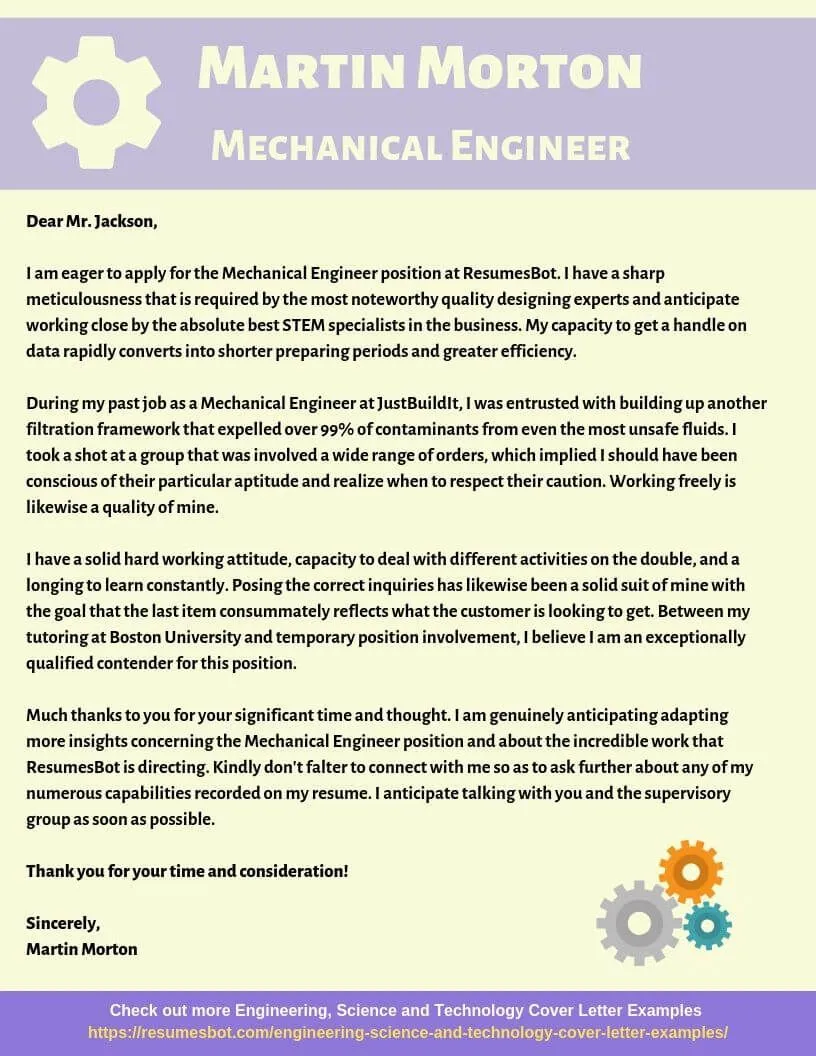Mechanical Engineer Cover Letter Overview
A well-crafted mechanical engineer cover letter is your first opportunity to make a strong impression on a potential employer. It’s a crucial document that complements your resume and provides a platform to showcase your skills, experience, and passion for mechanical engineering. This guide provides a comprehensive overview of creating an effective cover letter, offering insights and examples to help you stand out in the competitive job market.
Why a Strong Cover Letter Matters
A compelling cover letter does more than just reiterate the information in your resume. It allows you to elaborate on your qualifications, explain your career goals, and demonstrate your enthusiasm for the specific role and company. A strong cover letter can significantly increase your chances of landing an interview, making it an indispensable tool in your job search.
Highlighting Your Mechanical Engineering Skills
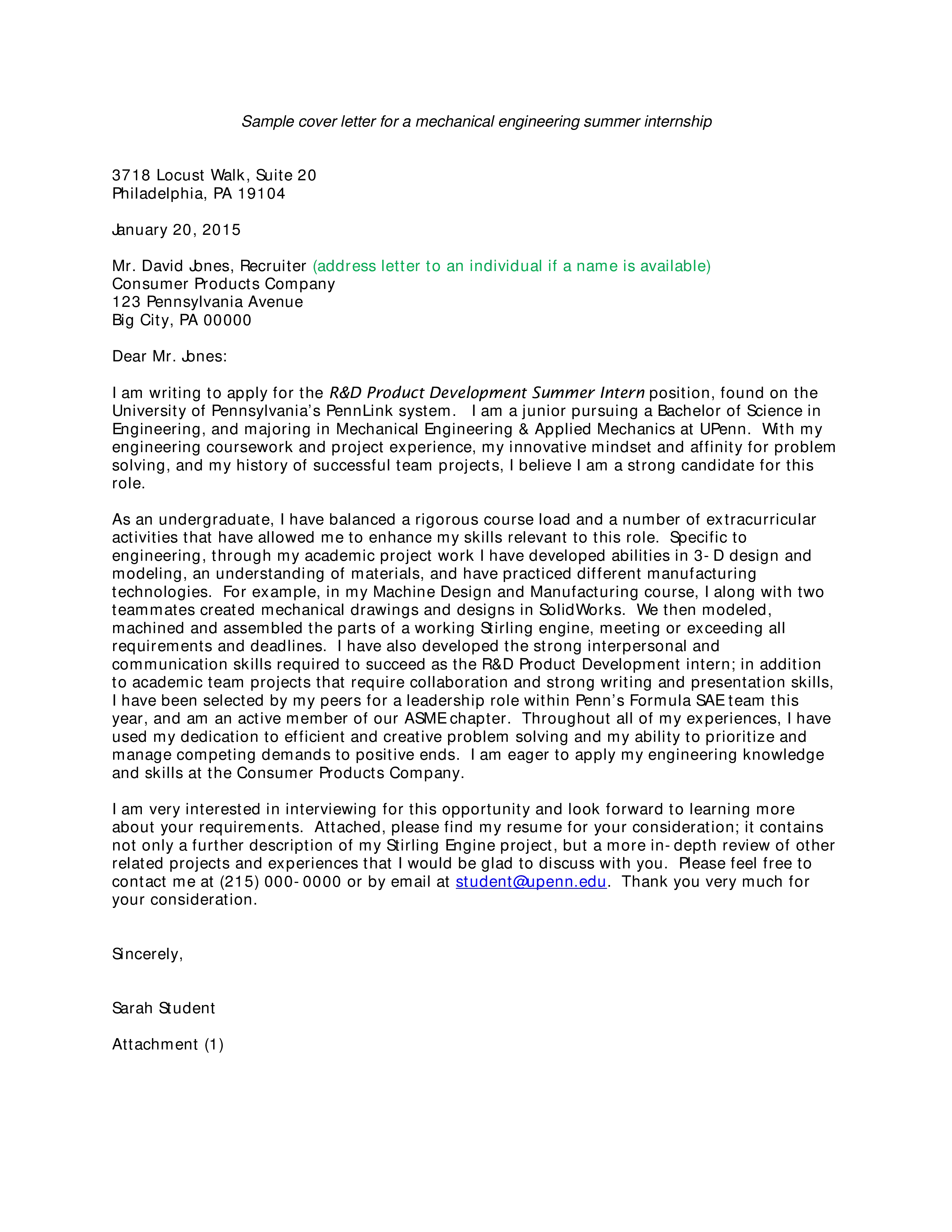
Your cover letter should spotlight your key mechanical engineering skills. These skills might include CAD software proficiency, knowledge of thermodynamics, fluid mechanics, solid mechanics, and design principles. Focus on skills that align with the job description and provide concrete examples of how you’ve applied these skills in previous projects or roles. This proactive approach helps the hiring manager understand how you can contribute to the team.
Cover Letter Structure
Structuring your cover letter correctly is vital for readability and impact. A well-organized cover letter guides the reader through your qualifications and experiences in a logical and engaging manner. The typical cover letter structure includes several key sections. Understanding and utilizing this structure can significantly enhance the professionalism and effectiveness of your application.
Header Section
The header should include your contact information name, phone number, email address, and optionally, your LinkedIn profile link. Below this, include the date, followed by the hiring manager’s name and title, if known, and the company’s address. This section ensures the recruiter knows who you are and how to contact you.
Greeting
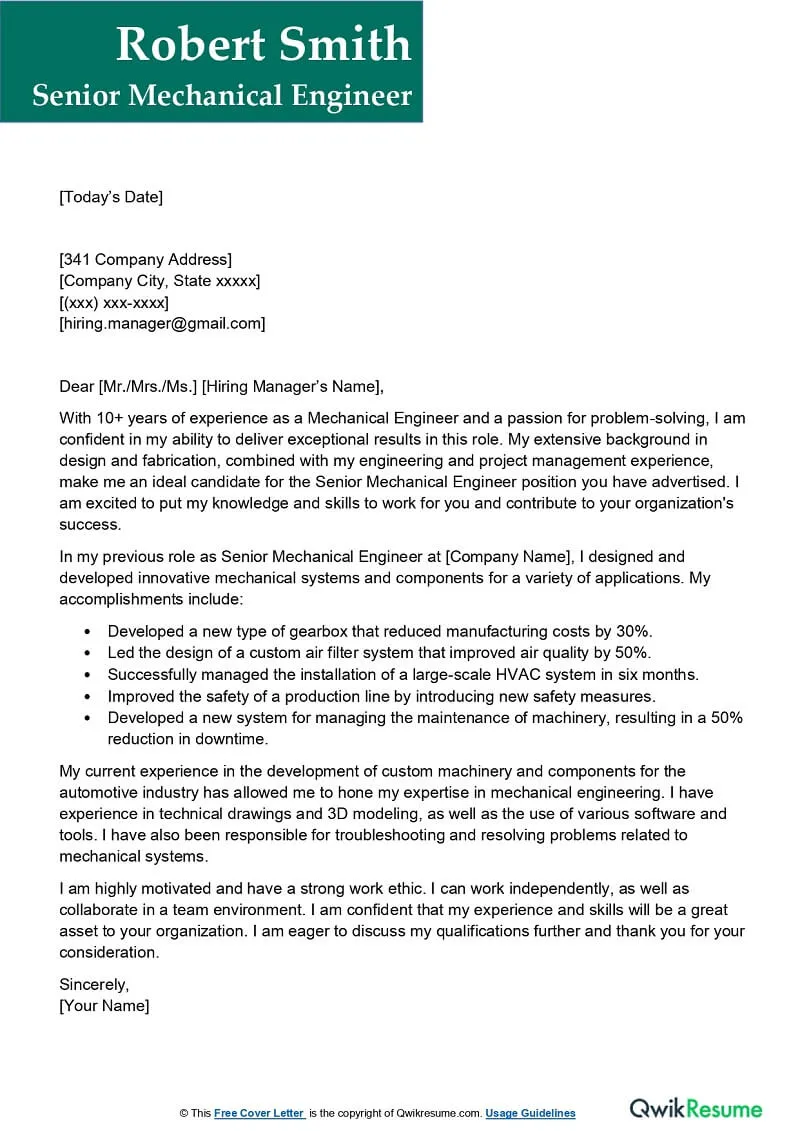
Address the hiring manager by name whenever possible. Researching the hiring manager’s name can show your initiative. If the name isn’t available, use a general greeting such as Dear Hiring Manager or Dear [Company Name] Hiring Team. Avoid generic greetings like To Whom It May Concern. This is the first step to build a professional approach.
Opening Paragraph
The opening paragraph should immediately grab the reader’s attention. State the position you’re applying for, where you found the job posting, and briefly highlight your most relevant qualifications. Express your enthusiasm for the role and the company to show your interest and demonstrate that you’ve researched the opportunity. This paragraph sets the tone for the rest of the letter.
Body Paragraphs
The body paragraphs are where you provide details and context. Describe your experience, skills, and accomplishments. Use specific examples to showcase your abilities and explain how your background aligns with the job requirements. Focus on what you can offer the company and how you can solve their challenges. This is your chance to highlight your value proposition.
Highlighting Achievements
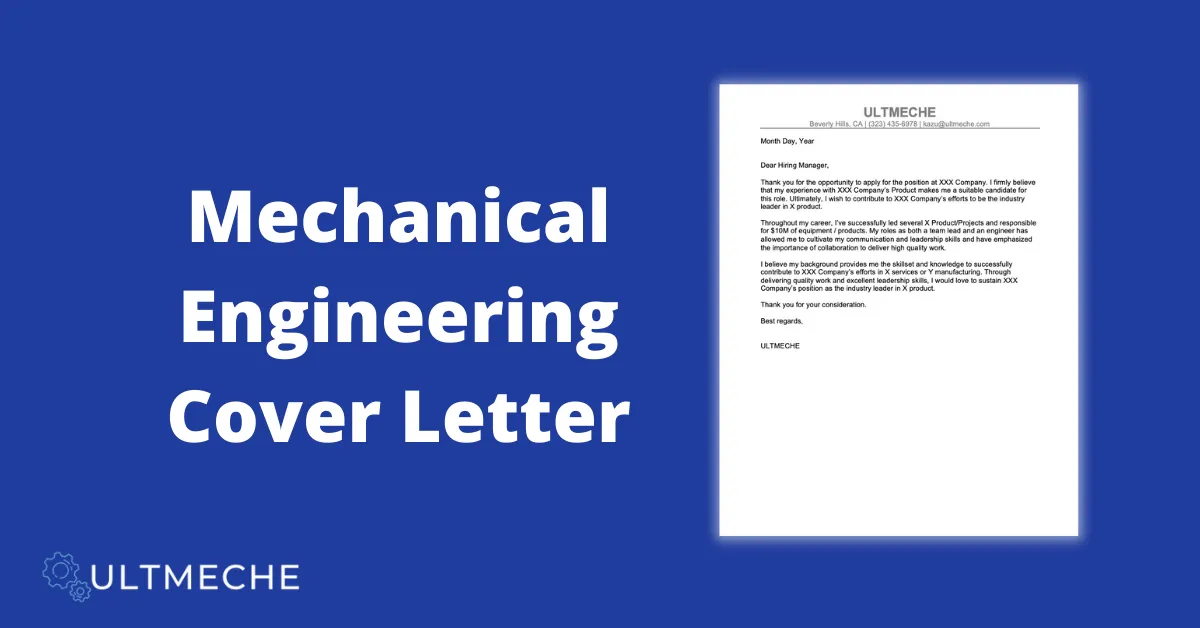
Rather than simply listing your responsibilities, emphasize your achievements and the impact of your work. Use action verbs to describe what you accomplished in each role. Quantify your achievements whenever possible to demonstrate the tangible results you’ve delivered, such as cost savings, efficiency improvements, or successful project outcomes. These achievements help hiring managers understand your potential contribution.
Quantifying Accomplishments
Whenever possible, quantify your achievements. Use numbers to illustrate the impact of your work. For instance, instead of saying you ‘improved efficiency,’ say that you ‘increased production efficiency by 15%’ or ‘reduced manufacturing costs by $10,000.’ Numbers and data provide concrete evidence of your skills and the value you bring to an organization.
Closing Paragraph
In the closing paragraph, summarize your key qualifications and reiterate your interest in the position. Thank the hiring manager for their time and consideration, and express your enthusiasm for the opportunity to discuss your qualifications further. Make sure to include a call to action, such as requesting an interview or suggesting a follow-up.
Formal Closing and Signature
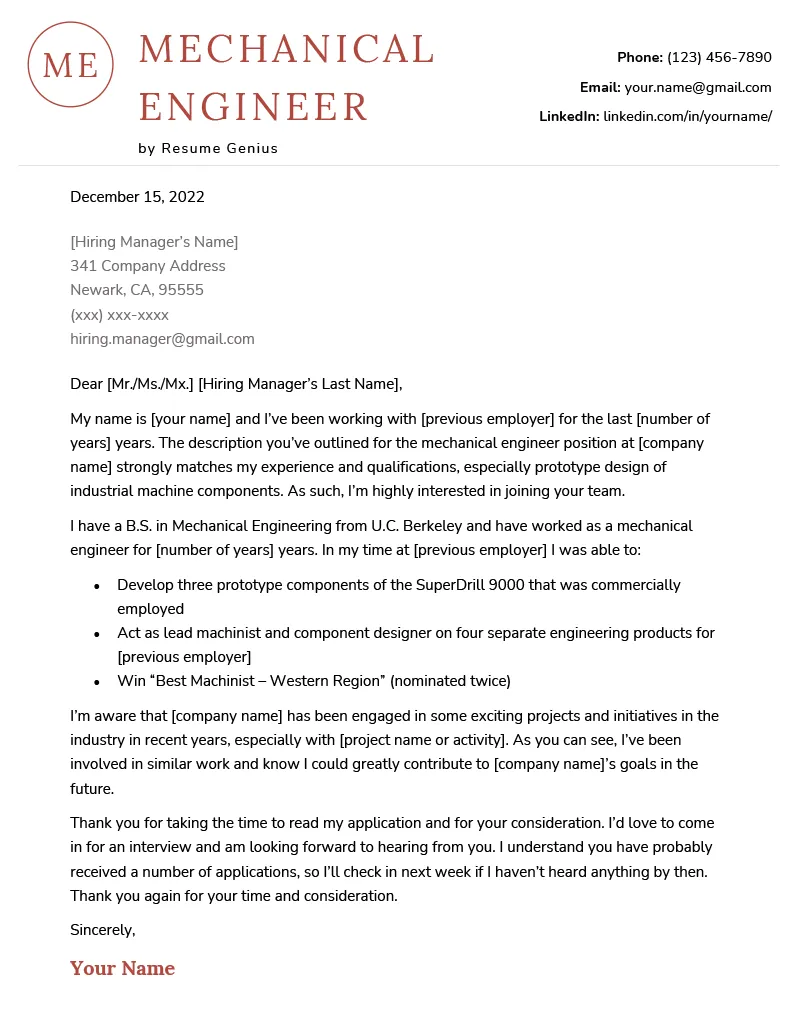
Use a professional closing such as Sincerely, Best regards, or Thank you. Leave space for your signature, and then type your full name below. This final touch demonstrates your professionalism and attention to detail.
Key Elements in a Mechanical Engineer Cover Letter
Including the right elements is crucial to make your cover letter effective. Mechanical engineers should emphasize technical skills, software proficiency, project experience, and problem-solving abilities. These elements demonstrate your readiness and expertise in the field. Ensure your cover letter reflects these essential aspects.
Technical Skills
Highlight your technical skills relevant to the job. This includes proficiency in areas such as thermodynamics, fluid dynamics, heat transfer, solid mechanics, and materials science. Providing examples of how you have used these skills in previous projects or roles will strengthen your application. The ability to apply these technical concepts is critical to demonstrate your capabilities.
Software Proficiency
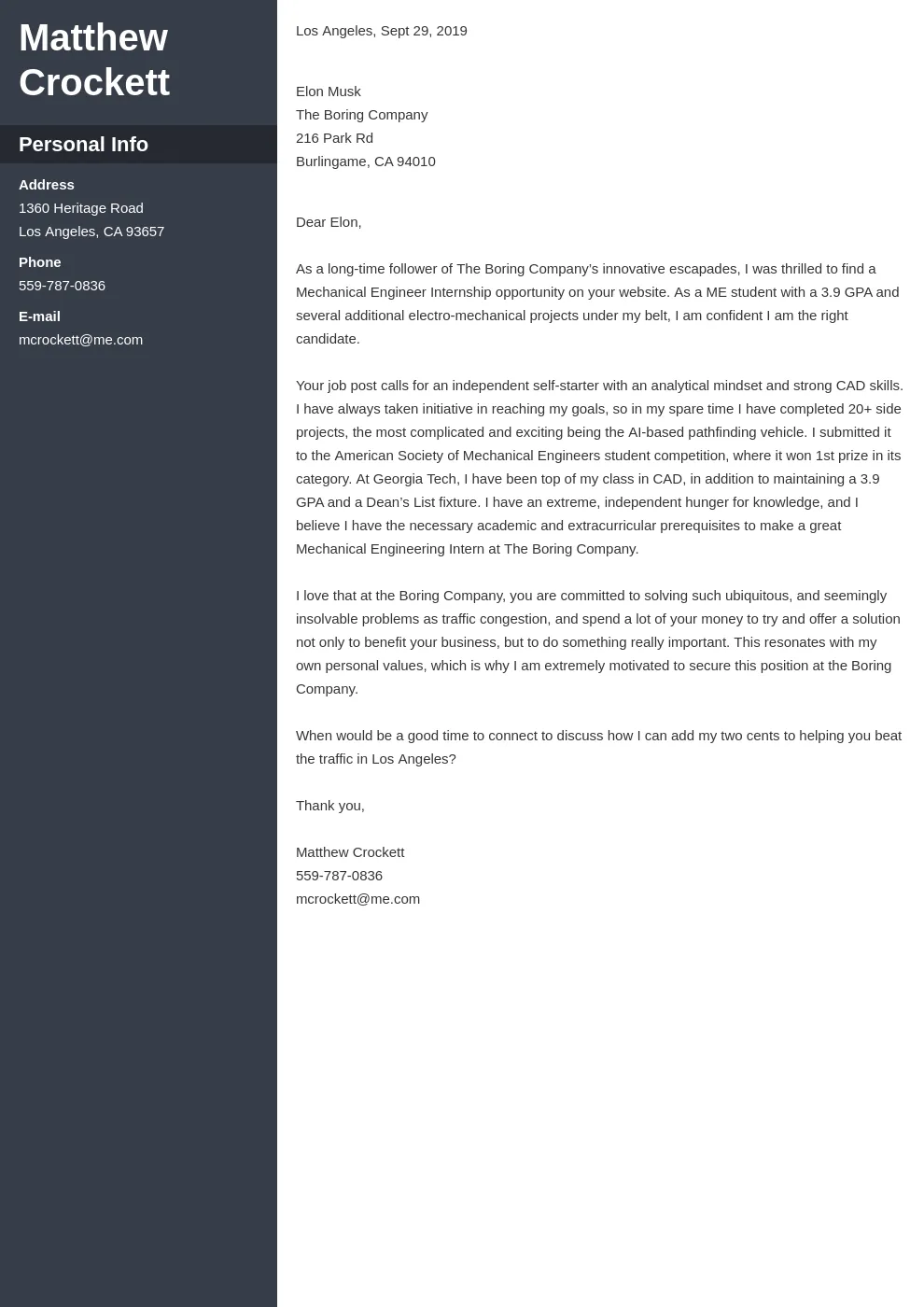
List the engineering software you are proficient in. This might include CAD software (like SolidWorks, AutoCAD, or Creo), FEA software (like ANSYS or COMSOL), and simulation tools. Mention the specific software versions and your level of expertise with each. Companies are looking for engineers who can use these tools effectively, so this is critical information.
Project Experience
Describe your relevant project experience. Provide details about the projects, your role, and the outcomes you achieved. Include any challenges you overcame and the solutions you implemented. The more detailed your project descriptions, the better, since it gives hiring managers clear examples of your capabilities.
Problem-Solving Abilities
Mechanical engineers should highlight their problem-solving skills. Provide examples of how you have identified, analyzed, and solved engineering challenges. Showcase your ability to think critically, develop innovative solutions, and troubleshoot technical issues. Demonstrate this with real-world examples and highlight successful outcomes.
Tailoring Your Cover Letter
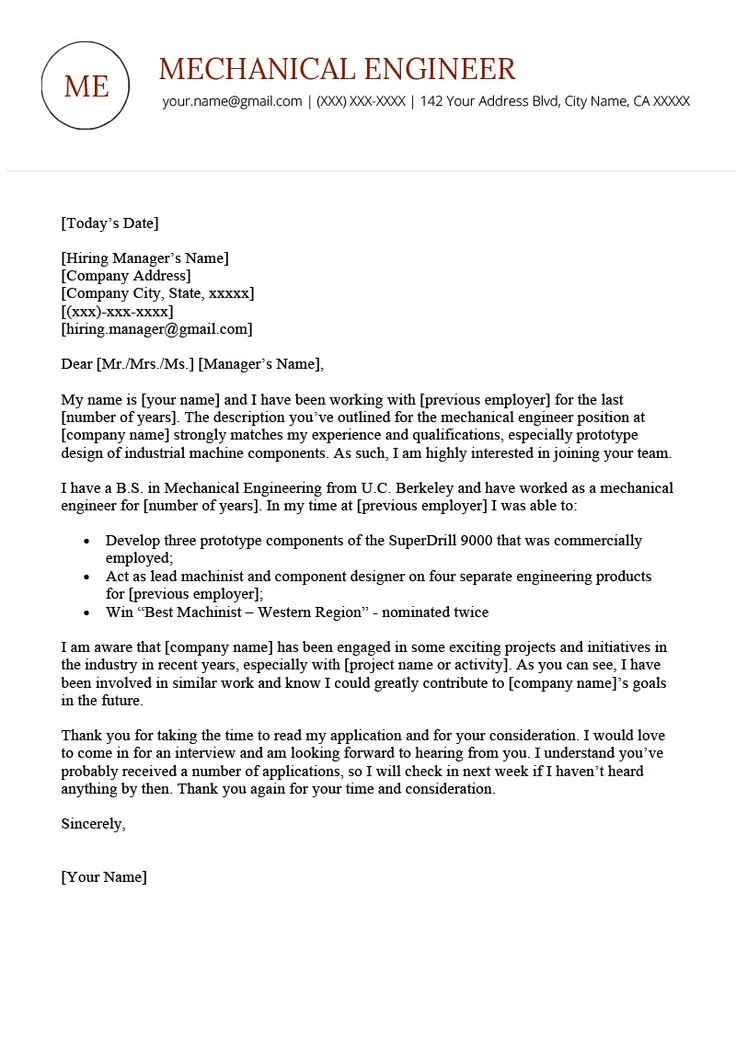
Customizing your cover letter for each job application is crucial for capturing the attention of the hiring manager. This involves thorough research of the company and matching your skills and experience to the specific job requirements. Using keywords strategically will also help your application stand out from the competition.
Researching the Company
Research the company thoroughly to understand their mission, values, and current projects. This knowledge allows you to tailor your cover letter to demonstrate how your skills and experience align with their specific needs and goals. Mentioning specific projects or initiatives they are involved in shows that you’ve done your homework and are genuinely interested in the position.
Matching Skills to Job Requirements
Carefully review the job description and identify the key skills and qualifications the employer is seeking. Highlight the skills and experiences in your cover letter that align with these requirements. Use the job description as a guide, and provide concrete examples of how you’ve demonstrated these skills in the past.
Using Keywords Strategically
Incorporate keywords from the job description into your cover letter. This helps your application get past applicant tracking systems (ATS) and ensures that your qualifications are clearly aligned with the job requirements. Use keywords naturally and strategically throughout the document, but don’t overdo it. The goal is to be relevant, not to stuff the letter with keywords.
Common Mistakes to Avoid
Avoiding common mistakes can significantly improve the effectiveness of your cover letter. Typos, grammatical errors, generic letters, and focusing too much on responsibilities rather than accomplishments are frequent pitfalls. By avoiding these errors, you can present yourself as a polished, professional candidate.
Typos and Grammatical Errors
Always proofread your cover letter carefully for typos and grammatical errors. These mistakes can undermine your credibility and make you appear unprofessional. Use spell-check, grammar-check tools, and ask someone else to review your letter for a fresh perspective. Ensuring accuracy is essential for making a positive impression.
Generic Cover Letters
Avoid sending generic cover letters. Tailor each cover letter to the specific job and company you’re applying to. Generic letters fail to demonstrate your interest and can make you appear less enthusiastic about the opportunity. Personalize your letter to show you understand the company’s needs and values.
Focusing Too Much on Responsibilities
While mentioning your responsibilities is important, don’t make it the primary focus of your cover letter. Instead, emphasize your accomplishments and how you’ve added value in previous roles. Use action verbs to describe your achievements, and quantify your results whenever possible to show the impact of your work. This shows how you can benefit the potential employer.
Mechanical Engineer Cover Letter Examples
Reviewing cover letter examples can provide valuable insight and inspiration. Look for examples that highlight different skill sets and experiences. Use these examples as a model for your own cover letter, but make sure to tailor the content to match your personal qualifications and the specific job requirements.
Example 1 Highlighting Design Skills
This example would focus on the design aspect of mechanical engineering, showcasing skills in CAD software, design optimization, and prototyping. It highlights the ability to create and refine engineering designs. The applicant may discuss how they have contributed to a specific design project, detailing the improvements, the specific tools used and the outcomes achieved, such as enhanced efficiency or reduced costs.
Example 2 Focused on Project Management
This example emphasizes project management skills, including experience in leading engineering teams, managing budgets, and ensuring project deadlines are met. It might detail the applicant’s experience managing complex engineering projects, including their role, the project’s goals, and the challenges they overcame. Quantitative results, such as projects completed on time or below budget, would be critical.
Example 3 Emphasizing Analytical Abilities
This example concentrates on analytical and problem-solving abilities, such as performing simulations, analyzing data, and conducting research. The applicant might describe their work in analyzing engineering problems, the methodologies used, and the conclusions reached. Details should show strong analytical skills, such as data analysis, modeling, and the development of innovative solutions.
Review and Proofreading
After writing your cover letter, review and proofread it thoroughly. Check for any errors in grammar, spelling, and punctuation. Ensure that the letter is well-organized, easy to read, and tailored to the specific job. Have someone else review your letter as well. An extra set of eyes can catch errors that you may have missed. A polished cover letter is a key to a strong first impression.
